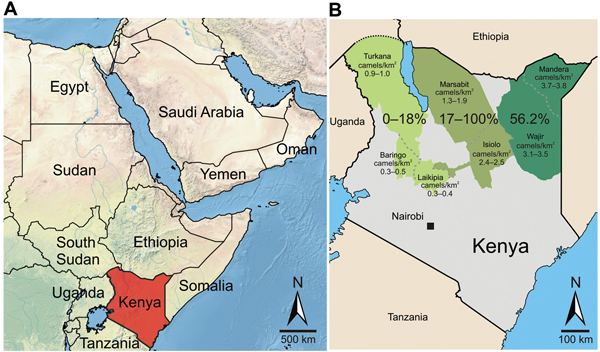Volume 20, Number 8—August 2014
Dispatch
Antibodies against MERS Coronavirus in Dromedary Camels, Kenya, 1992–2013
Figure

Figure. Greater Horn of Africa and KenyaA) Arabian Peninsula and neighboring countries in the Greater Horn of AfricaB) Detailed map of Kenya showing sampling sites in 7 counties (Turkana, Baringo, Laikipia, Marsabit, Isiolo, Mandera, and Wajir) for Middle East respiratory syndrome coronavirus (MERS-CoV)Counties were assigned to 3 regions named after the former administrative provinces of Rift Valley, Eastern, and Northeastern (left to right)The 3 sampling regions are indicated in shades of green and other counties are indicated in grayPercentages of camels positive for antibodies against MERS-CoV are shown with the density of camels (individuals/km2) for the analyzed regions during 2 periods (1991–2000 and 2000–2013)Serosurveys were performed during 1992–2013Camel population numbers were determined for 1991–2000 and 2000–2013Maps were created by using data from http://www.naturalearthdata.com.
1These authors contributed equally to this article.